In the previous academic year I undertook a part-time undergraduate diploma at the Institute of Continuing Education (ICE) of the University of Cambridge. You could say that since completing my PhD, I missed being in “school”, so when I had the opportunity to set some time aside for personal development, I jumped at the chance to go back to school.
ICE offers all kinds of education from courses that are only a few weeks up to part-time Master degrees. I opted to go for an undergraduate diploma in Creativity Theory, History and Philosophy, which is part-time study for the duration of one academic year. I chose this course because I wanted to get some theoretical education in art and creativity in general.
I previously spent a year in art school in my home country, but this was ages ago. Moreover, this was an applied art course, so most of it was making art yourself as opposed to learning about art history or theory. So, the ICE course was an interesting challenge for me as I hadn’t previously studied the humanities at an academic level.
I had a great time and met some really nice people during this course. The materials and assignments challenged me past what I could comfortably do, so I feel like I learned a lot.
Now that it’s been almost a year since completing this course, I am looking over my notes and the teaching materials again to dive a bit deeper in the topics I find particularly interesting. This blog post is the first one in a series. I hope that with these posts, I can encourage other people to try something new in their art practice or to try their hand at art for the first time.
In this post I want to share what I did for one of the smaller assignments, which was to create a chance composition. I understand this approach to come from artists wanting to take taste out of the process of making their art, as they felt that their work and the choices in their work were influenced by outside factors. One example of introducing chance in ones art is Mozart’s musical dice game, which you can try out here.
In the assignment for the course, we were encouraged to use kitchen utensils to create a chance composition by simply dropping the utensils on the worksurface or the floor. This is a photo of what I created:
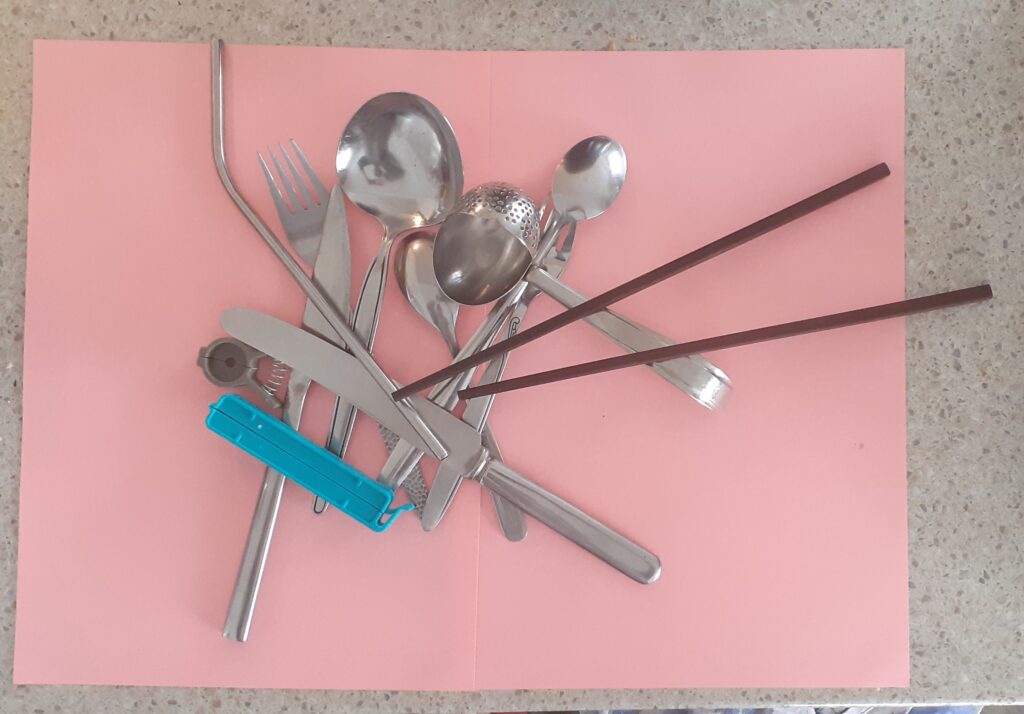
I used my drawing tablet and did different traces of the shapes in this picture, creating different layers:
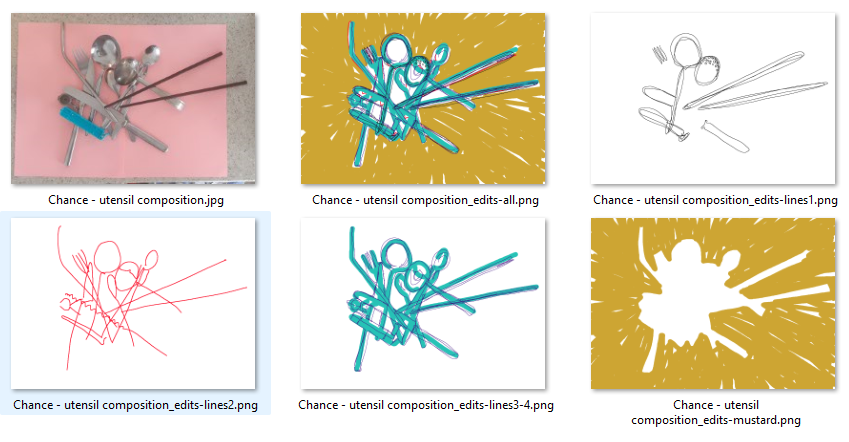
I recently wanted to use this approach to placing various cardboard shapes onto a background, to use a photo of this as the base onto which I would create digital drawings:
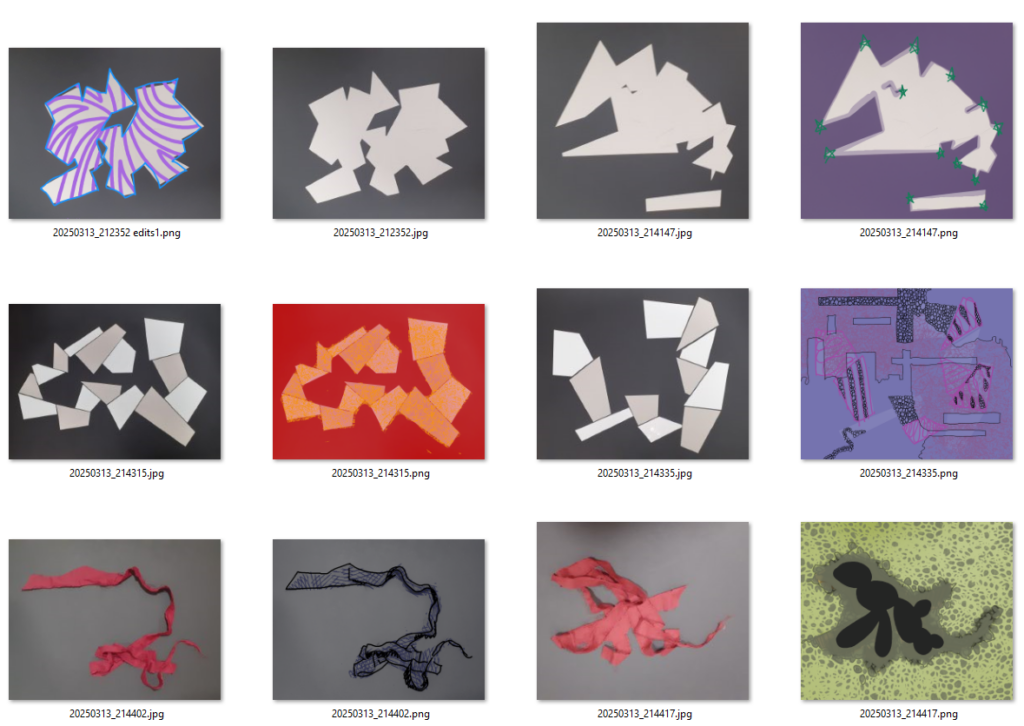
The first two compositions shown above were created by dropping the shapes in a random spot, trying not to look so I would not influence their position. The third and fourth compositions were more deliberate but chance determined the order of the shapes being used. Finally, I used a strip of fabric and simply dropped it on the background.
I am most happy with the drawings I created on experiments three and four, as I found these compositions most interesting to work with, so I spent most time on them:
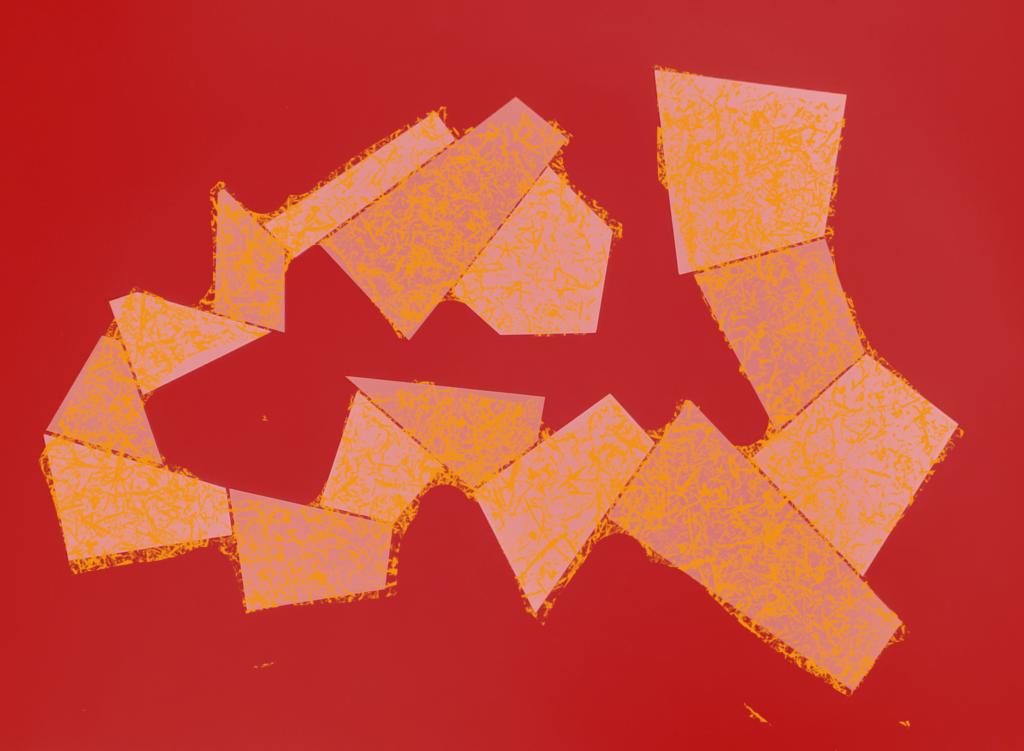
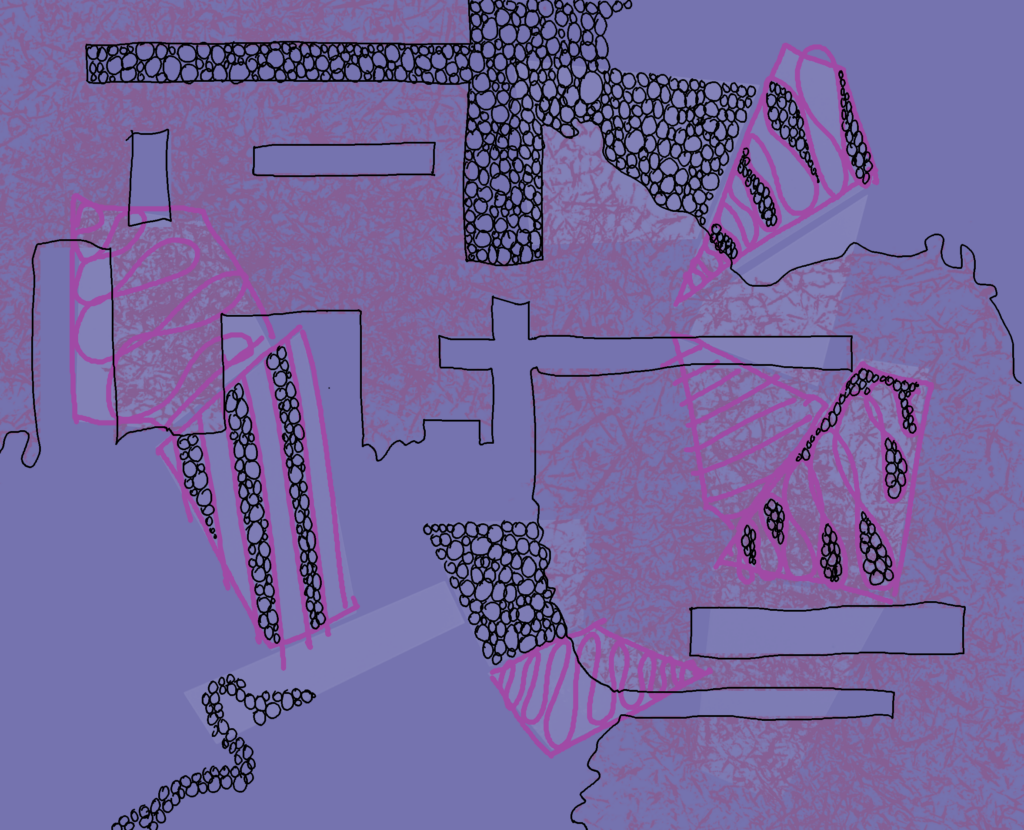
I found this a fun way to change up how I do my art, and it doesn’t require a lot of tools or materials. There are some great descriptions of how to get started with chance composition, and it’s something you can do with young kids too. The MoMA website shows several more of such chance compositions, some of which you can easily do yourself to create really nice home decoration.